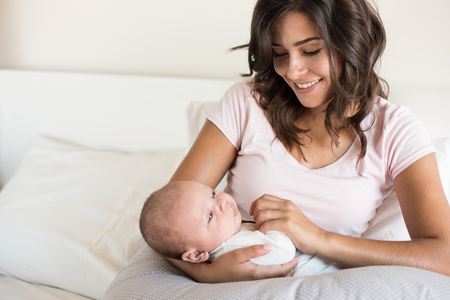Introduction: The Babywearing Journey
For many American families, babywearing has become an essential part of everyday life. From bustling city streets to quiet suburban parks, you’ll often see parents and caregivers keeping their little ones close while remaining hands-free. Babywearing isn’t just a practical choice—it’s also a way to nurture connection, provide comfort, and make those early months and years just a bit easier for everyone. As you begin your own babywearing journey, you’ll quickly discover there are two main styles to consider: structured carriers and wraps. Each offers unique benefits and features, but choosing the right one depends on your lifestyle, preferences, and your baby’s needs. In this article, we’ll explore what makes babywearing so popular in the U.S., introduce these two types of carriers, and help you find the perfect fit for your family.
2. What is a Structured Carrier?
When you’re juggling the demands of modern parenthood, a structured carrier can feel like a true lifesaver. But what exactly is a structured carrier? Simply put, it’s a baby carrier designed with padded shoulder straps, a supportive waistband, and a soft yet sturdy seat for your little one. These carriers are engineered for comfort and safety, providing ergonomic support both for your child and for you as the caregiver. If you find yourself constantly on the move—running errands, attending playdates, or traveling—a structured carrier makes babywearing feel almost effortless.
Key Features of Structured Carriers
| Feature | Benefit for Parents | Benefit for Baby |
|---|---|---|
| Padded Shoulder Straps & Waistband | Distributes weight evenly, reducing back and shoulder strain | Provides secure support and closeness |
| Buckle & Clip System | Quick and easy to put on or take off—great for busy days | Stable fit keeps baby safe during transitions |
| Adjustable Settings | Fits multiple body types; both parents can use it comfortably | Grows with your child from infant to toddler stage (check manufacturer’s guidelines) |
| Ergonomic Seat Design | Keeps hands free to multitask | Supports healthy hip development (M-shaped position) |
| Pockets & Storage Options | Handy for storing keys, phone, or pacifiers—no extra bag needed! | N/A |
Comfort & Support on the Go
A structured carrier stands out because it’s crafted to help parents stay comfortable even when wearing their baby for longer periods. The design prioritizes proper weight distribution—meaning less fatigue and more time enjoying those precious cuddles. For babies, this type of carrier offers an ergonomic seat that supports natural posture and hip health, which pediatricians in the U.S. often recommend.
Ease of Use for Busy Parents
If you’re a parent who’s always on the go, structured carriers offer the convenience you need. With intuitive buckles and minimal adjustments required, you can get your little one in and out quickly—even while they’re napping or wiggling with excitement. Whether you’re headed to Target or strolling through your neighborhood park, this kind of carrier helps make daily routines smoother while keeping your baby close to your heart.
![]()
3. What is a Wrap?
A wrap carrier is one of the most traditional and versatile ways to carry your baby, offering a unique blend of flexibility and comfort that many parents in the U.S. adore. Essentially, a wrap is a long piece of soft fabric that you tie and adjust around your body to create a snug pouch for your little one. This design allows you to customize the fit perfectly for both you and your baby, no matter your body type or your baby’s size.
One of the biggest appeals of using a wrap is the sense of closeness it fosters. Your baby rests right against your chest, feeling your heartbeat and warmth, which can be incredibly soothing for newborns and young infants. This skin-to-skin contact not only helps with bonding but also supports breastfeeding on the go—a feature many American moms find invaluable during those early months.
Wraps are also beloved for their cozy feel. The gentle fabric hugs your baby securely while evenly distributing weight across your shoulders and back, making it comfortable for longer periods of carrying. Whether you’re walking around the house, taking a stroll through the park, or enjoying a family outing at a local farmers’ market, wraps offer that comforting “babywearing hug” wherever you go.
4. Key Differences: Structured Carrier vs. Wrap
When deciding between a structured carrier and a wrap, it’s helpful to see how they stack up in key areas that matter most for American families. Let’s compare both options side by side so you can feel confident about choosing what fits your lifestyle best.
| Feature | Structured Carrier | Wrap |
|---|---|---|
| Comfort | Padded shoulder straps and waistband distribute weight evenly; often preferred for longer outings or heavier babies. | Soft fabric molds to baby and parent; cozy and snuggly, especially for newborns, but may lack support for extended wear. |
| Learning Curve | Quick to put on—buckles and clips make setup intuitive, great for busy mornings or on-the-go parents. | Takes practice to master wrapping techniques; some parents find it overwhelming at first but rewarding with time. |
| Adjustability | Easily adjustable straps fit different caregivers; size-specific options available. | Highly adjustable—one size fits most; adapts as your baby grows, but adjustments require re-tying the wrap. |
| Versatility | Can be used from infancy through toddlerhood depending on the model; multiple carry positions (front, back, hip). | Mainly front-carry; best suited for newborns and smaller infants; less versatile for older babies. |
| Typical Use Cases | Perfect for errands, park visits, family outings, or travel—especially when you need to get things done hands-free. | Loved for bonding at home, soothing fussy babies, or those precious early months of skin-to-skin contact. |
In summary: If you’re looking for convenience and structure during daily routines like grocery runs or exploring local events, a structured carrier might be your go-to. If your heart is set on close cuddles and gentle newborn bonding at home or during quiet walks around the neighborhood, wraps offer a sweetly nurturing choice. Every family’s rhythm is unique, so think about which features will support your daily adventures and special moments together.
5. Considerations for Your Family
Choosing between a structured carrier and a wrap isn’t just about style—it’s about what works best for your unique family. Here are some real-life factors to think through as you make this important decision:
Climate and Weather
Where you live can greatly influence your choice. If you’re in a warmer part of the U.S., like Florida or Southern California, lightweight wraps made from breathable fabrics may help keep you and your baby cool. Meanwhile, families in cooler climates might appreciate the added structure and padding of a structured carrier, especially when layering up during chilly months.
Budget
Babywearing can be an investment, but there are options for every budget. Wraps tend to be more affordable upfront and can often be used from newborn through toddlerhood with proper technique. Structured carriers may come with a higher price tag, especially those with added features like ergonomic support or multiple carrying positions, but their durability and versatility can make them worthwhile in the long run.
Parent or Caregiver Preferences
Every caregiver is different—some love the cozy, custom fit of a wrap and enjoy the ritual of tying it, while others prefer the quick buckles and easy adjustments of a structured carrier. Think about who will be using the carrier most often; grandparents or babysitters might feel more comfortable with straightforward clips rather than learning how to tie a wrap.
Baby’s Age and Stage
The right carrier also depends on your baby’s age and development. Soft wraps are perfect for newborns who crave closeness and gentle support, while structured carriers shine as your little one gets bigger and heavier, offering sturdier back support for longer outings.
Finding What Works for You
No matter where you live or what your routine looks like, choosing between a structured carrier and a wrap is deeply personal. Listen to your instincts, try out different options if possible, and trust that you’ll find something that helps you snuggle close while keeping life moving forward together.
6. Making the Choice: Which Carrier is Right for You?
Choosing between a structured carrier and a wrap is a very personal decision, and it’s natural to feel a bit overwhelmed with all the options out there. Remember, there isn’t a single “right” answer—just what feels best for you and your baby. Every family is unique, and your needs may even change as your little one grows. If you love the snug comfort and closeness of a wrap, embrace it wholeheartedly. If you prefer the convenience and support of a structured carrier, that’s wonderful too! Many parents find themselves using both at different stages or in different situations.
Trust yourself and take cues from your baby—they will let you know what makes them feel safe and content. It’s okay to try different carriers to see what fits best into your daily routine. No matter which option you choose, remember that the most important thing is the loving connection you share during those special moments together. You’re doing an amazing job simply by being present and attentive. There’s no need for perfection—just gentle choices that work for your family. If you ever feel unsure, reach out to other parents or local babywearing groups; you are not alone on this journey. Your confidence and care are already exactly what your baby needs.


